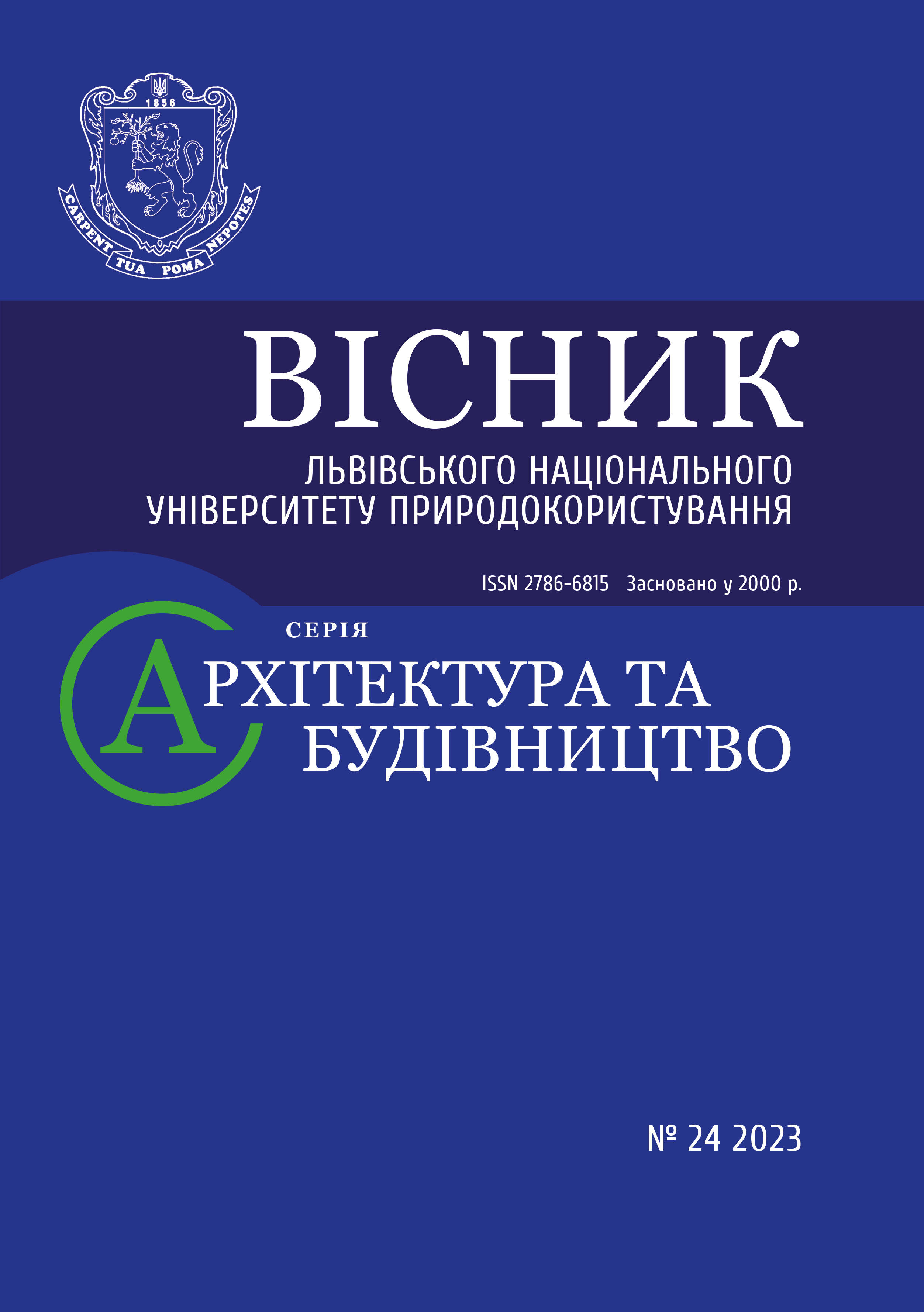FUNDAMENTAL DATA BANKS FOR CREATION OF GEOGRAPHIC INFORMATION SYSTEMS OF UNITED TERRITORIAL COMMUNITIES
DOI:
https://doi.org/10.31734/architecture2023.24.151Keywords:
data bank, united territorial community, geographic information system, map, land and water resources, spatial objects, ecologyAbstract
Life management and modeling of the development of united territorial communities (UTC) is associated with the collection, processing, distribution, and storage of various technical, operational, financial, environmental, and other information. It is the basis for solving various current and future problems of forecasting development, improving the ecological conditions of territories, and optimizing the use of land, water, infrastructure resources, and system land use of UTC.
The majority of the mentioned data has a spatial component that characterizes objects and environmental phenomena in terms of their geographical location, therefore the organization of effective interconnection between data of different types and their operation is carried out based on the use of geoinformation technologies (GIS).
In the modern sense, GIS is an information system that provides collection, storage, processing, access, display and distribution of spatial coordinate data. It contains data on spatial objects in the form of their digital representations (vector, raster, and others) and at the same time includes, following the tasks, a set of functional capabilities in which geoinformation technology operations are implemented, supported by software, hardware, information, regulatory, personnel and organizational support.
Visual analysis is the most common and simplest way to use geographic information systems. Namely, the comparison of various objects (data about them) in the same territory to identify and make the following analysis of the dependencies between them.
The resource potential of the united territorial community is the available resources, including spatial, land, and financial resources. The capacity of the territorial community is primarily characterized by whether the resources of the community are effectively used, which make up its resource potential, which plays a key role in determining the functions, direction and dynamics of the development of the community.
The development of the market economy of infrastructure obliges communities to solve complex tasks of resource potential management, among which is the maximum use of potential opportunities, the formation of the ability to quickly adapt to the changing situation on the market.
References
Borovyi V. O., Zarytskyi O. V. GIS-technologies in geodesy and land organization. Kyiv: Vistka, 2017. 252 р.
Khurtsylava K. V., Lytvynov V. A., Maistrenko S. Ya. Comparing some space-time models of geodata applied to organize the GIS informational resources in the field of public administration (sample of a forestry enterprise). Mathematical machines and systems. 2019. No 2. P. 51–62.
Lypskyi V. GIS as a tool of territory management. Application of modern computer-based technologies in the spatial planning of UTC. URL: https://hromady.org/wp-content/uploads/2020/01/%D0%93%D0%86%D0%A1-%D1%8F%D0%BA-%D1%96%D0%BD%D1%81%D1%82%D1%80%D1%83%D0%BC%D0%B5%D0%BD%D1%82-%D1%83%D0%BF%D1%80%D0%B0%D0%B2%D0%BB%D1%96%D0%BD%D0%BD%D1%8F-%D1%82%D0%B5%D1%80%D0%B8%D1%82%D0%BE%D1%80%D1%96%D1%8F%D0%BC%D0%B82020-1.pdf (Last accessed 01 August 2023).
Novakovskyi L., Novakovska I. Establishment of united territorial communities and problems of their land management. Economist. 2018. No 8. P. 11–16.
Tretiak A. M., Tretiak V. M., Panchuk O.Ya. A new model of land organization in Ukraine in compliance with the reform of local government. Land resources management and land organization. 2017. No 2. P. 2–12.


